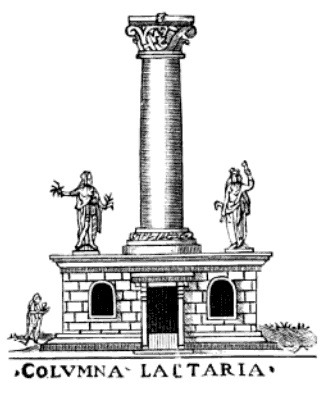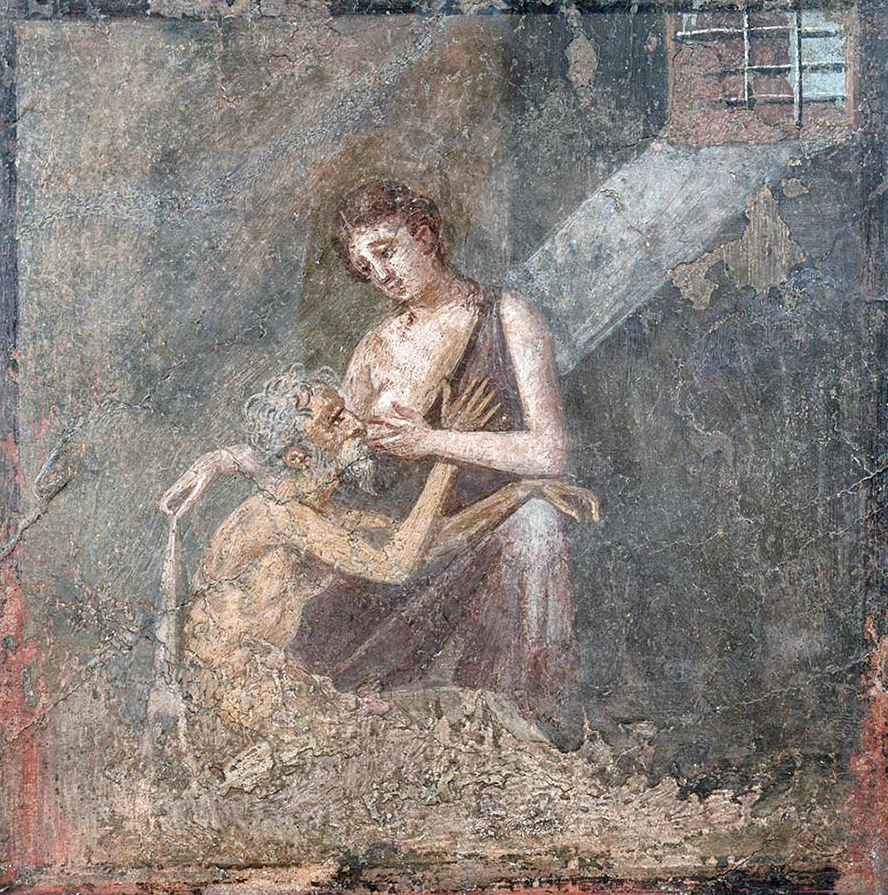Columna Lactaria on:
[Wikipedia]
[Google]
[Amazon]
 The ''Columna Lactaria'' ("Milk Column") was a landmark in
The ''Columna Lactaria'' ("Milk Column") was a landmark in  One of the neighborhoods razed for the construction of the theater was the
One of the neighborhoods razed for the construction of the theater was the
online.
Richardson, ''A New Topographical Dictionary'', p. 94, discounts the meaning of any association of the "Milk Column" with the ''Caritas Romana'' story, but see also Palmer, ''Carthage and Rome at Peace'', p. 98, note 9
online.
/ref>
 The ''Columna Lactaria'' ("Milk Column") was a landmark in
The ''Columna Lactaria'' ("Milk Column") was a landmark in ancient Rome
In modern historiography, ancient Rome is the Roman people, Roman civilisation from the founding of Rome, founding of the Italian city of Rome in the 8th century BC to the Fall of the Western Roman Empire, collapse of the Western Roman Em ...
in the Forum Holitorium
The Forum Holitorium or Olitorium (Latin for the "Market of the Vegetable Sellers"; ) is an archaeological area of Rome, Italy, on the slopes of the Capitoline Hill. It was located outside the Carmental Gate in the Campus Martius, crowded betwee ...
, or produce market. The Roman grammarian Festus
Festus may refer to:
People Ancient world
*Porcius Festus, Roman governor of Judea from approximately 58 to 62 AD
*Sextus Pompeius Festus (later 2nd century), Roman grammarian
*Festus (died 305), martyr along with Proculus of Pozzuoli
*Festus (h ...
says it was so called "because they would bring babies there to be fed with milk." It seems to have been a public charity where poor parents could obtain milk for their infants, or a central site for locating and hiring wet nurse
A wet nurse is a woman who breastfeeding, breastfeeds and cares for another's child. Wet nurses are employed if the mother dies, if she is unable to nurse the child herself sufficiently or chooses not to do so. Wet-nursed children may be known a ...
s. It has also been interpreted as a sanctioned site of child abandonment
A child () is a human being between the stages of birth and puberty, or between the developmental period of infancy and puberty. The term may also refer to an unborn human being. In English-speaking countries, the legal definition of ''chi ...
, where parents unable or unwilling to care for newborns could leave the child in the hope that it might be pitied and fostered (that is, given milk).
The ''Columna Lactaria'' was located close to the Temple of Pietas, which displayed a painting on the theme of '' Caritas Romana'' ("Roman Charity"), about a woman giving breastmilk to an aged parent. The column was probably destroyed by the construction of the Theater of Marcellus, beginning in the 40s BC.
Vicus
In Ancient Rome, the Latin term (plural ) designated a village within a rural area () or the neighbourhood of a larger settlement. During the Republican era, the four of the city of Rome were subdivided into . In the 1st century BC, Augustus ...
Sobrius, where the residents offered libations of milk to a Punic god Romanized
In linguistics, romanization is the conversion of text from a different writing system to the Roman (Latin) script, or a system for doing so. Methods of romanization include transliteration, for representing written text, and transcription, ...
as '' Mercurius Sobrius''. This community may have maintained the ''Columna Lactaria''; Robert E.A. Palmer thought that the milk-offerings of Punic cult
Cults are social groups which have unusual, and often extreme, religious, spiritual, or philosophical beliefs and rituals. Extreme devotion to a particular person, object, or goal is another characteristic often ascribed to cults. The term ...
might shed light on the significance of the column. Into the early 20th century, the piazza Montanara adjacent to the theater continued to be a place where wet nurses could be sought for hire.Mario Torelli, ''Typology and Structure of Roman Historical Reliefs'' (University of Michigan Press, 1992), p. 11online.
Richardson, ''A New Topographical Dictionary'', p. 94, discounts the meaning of any association of the "Milk Column" with the ''Caritas Romana'' story, but see also Palmer, ''Carthage and Rome at Peace'', p. 98, note 9
online.
/ref>
References
{{Reflist Topography of the ancient city of Rome Religion and children Child welfare Wet nursing